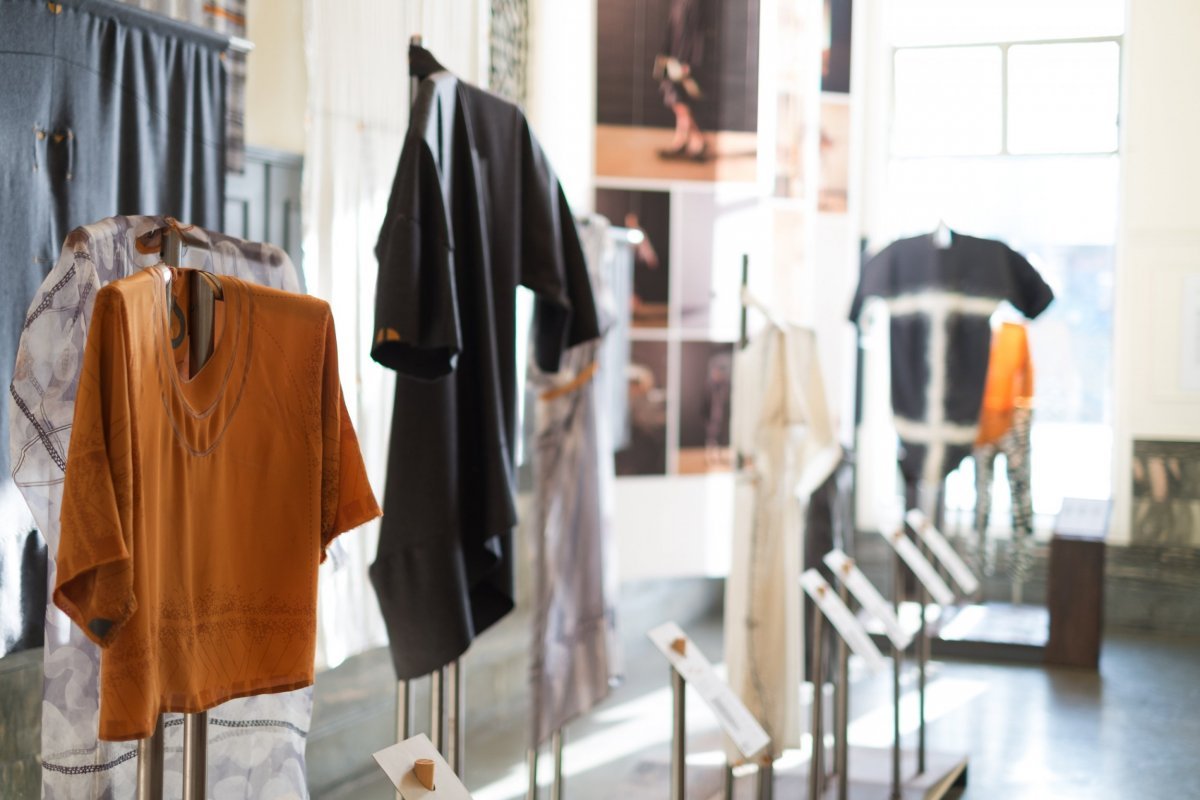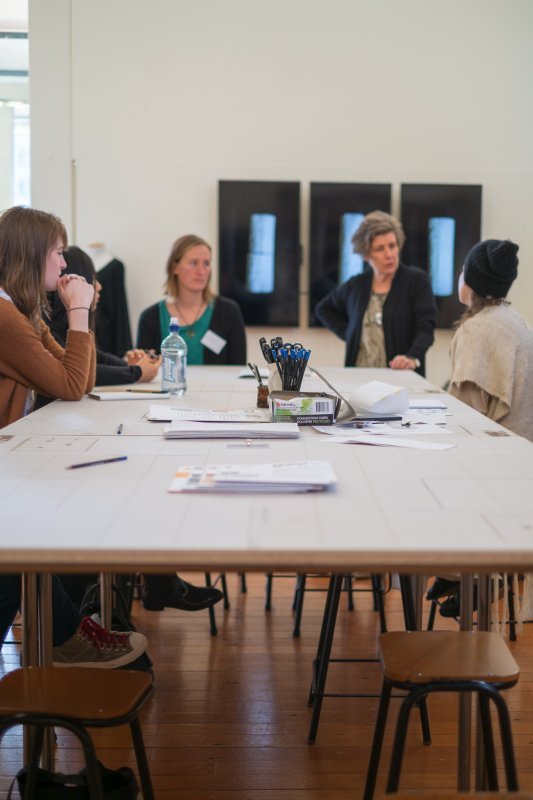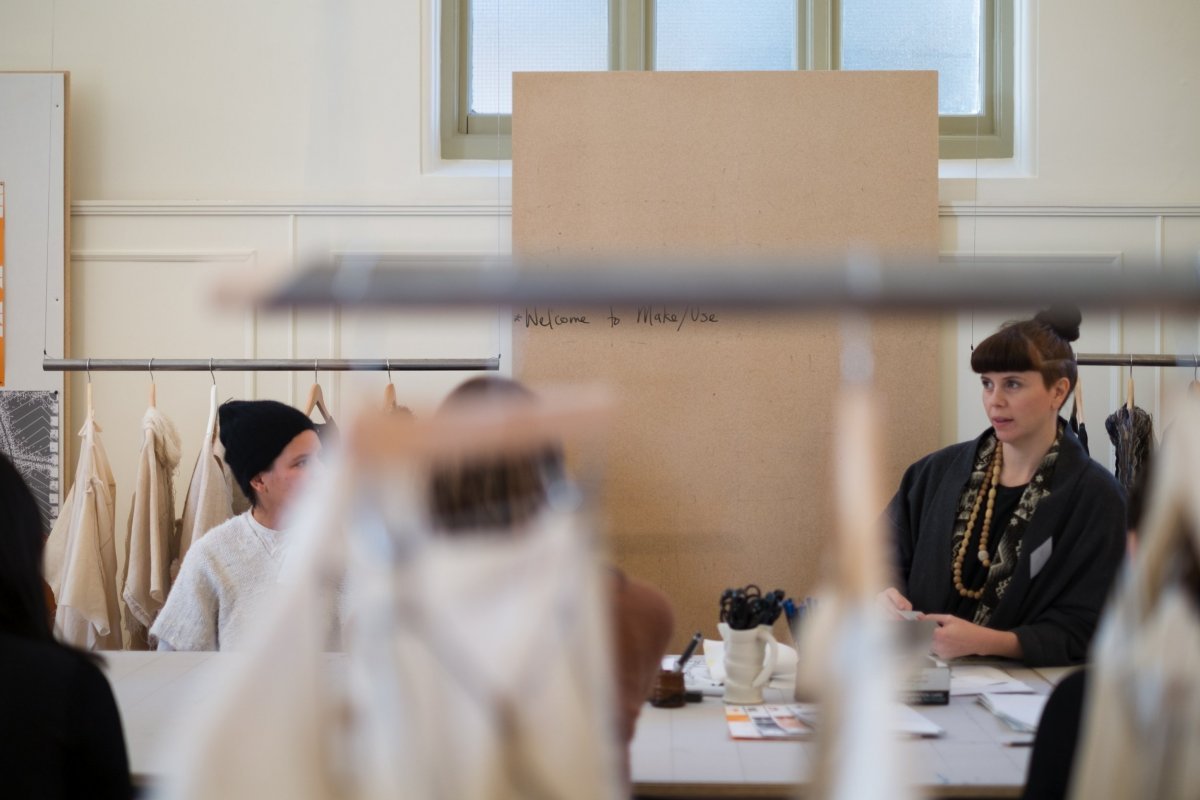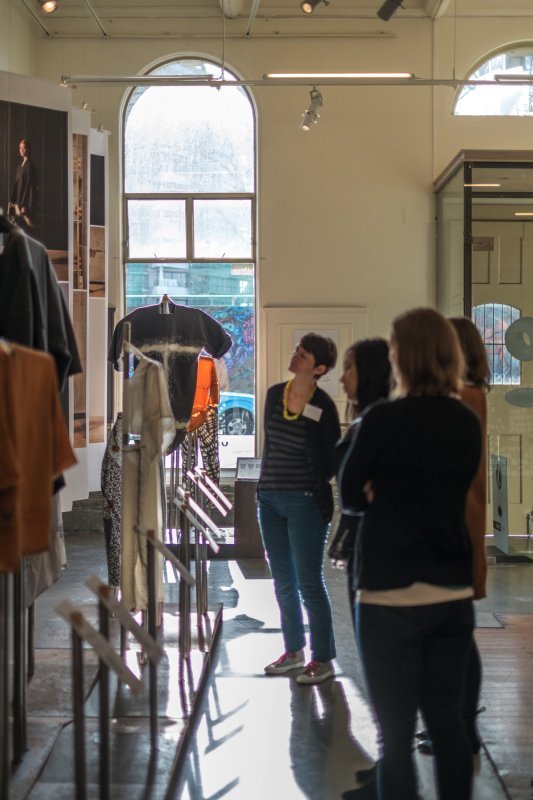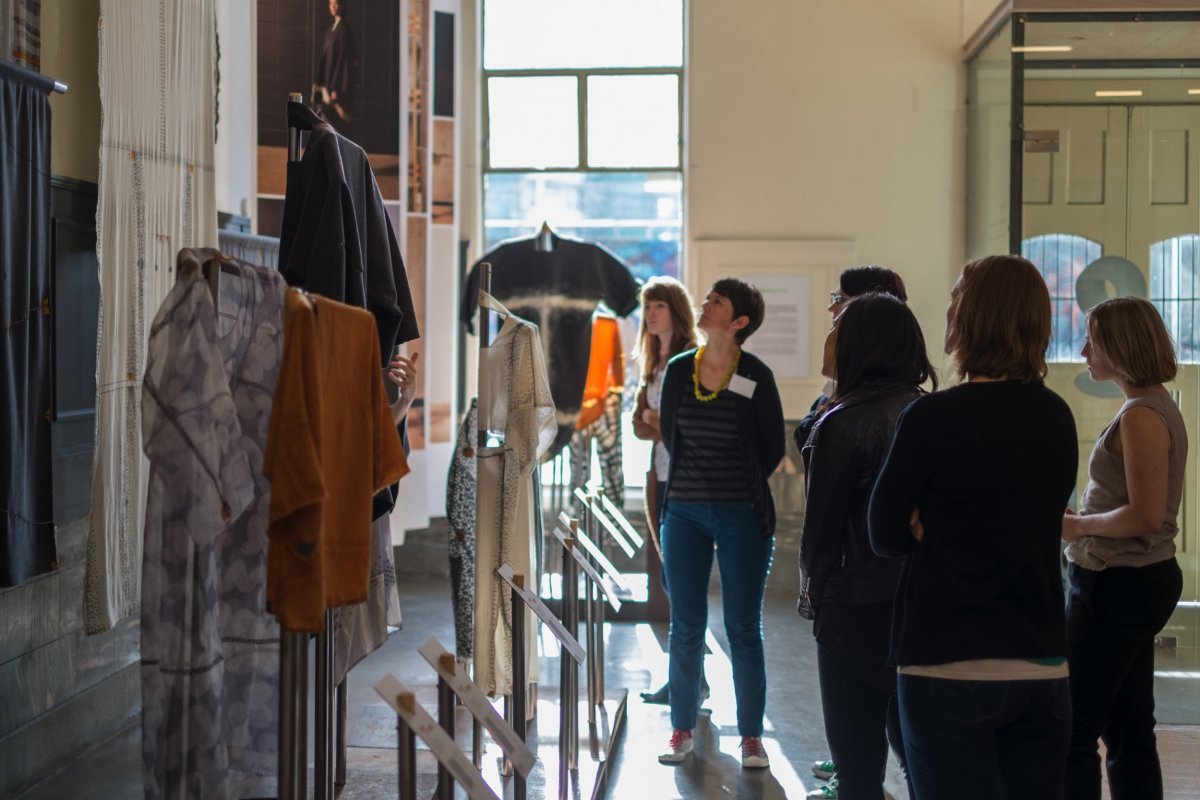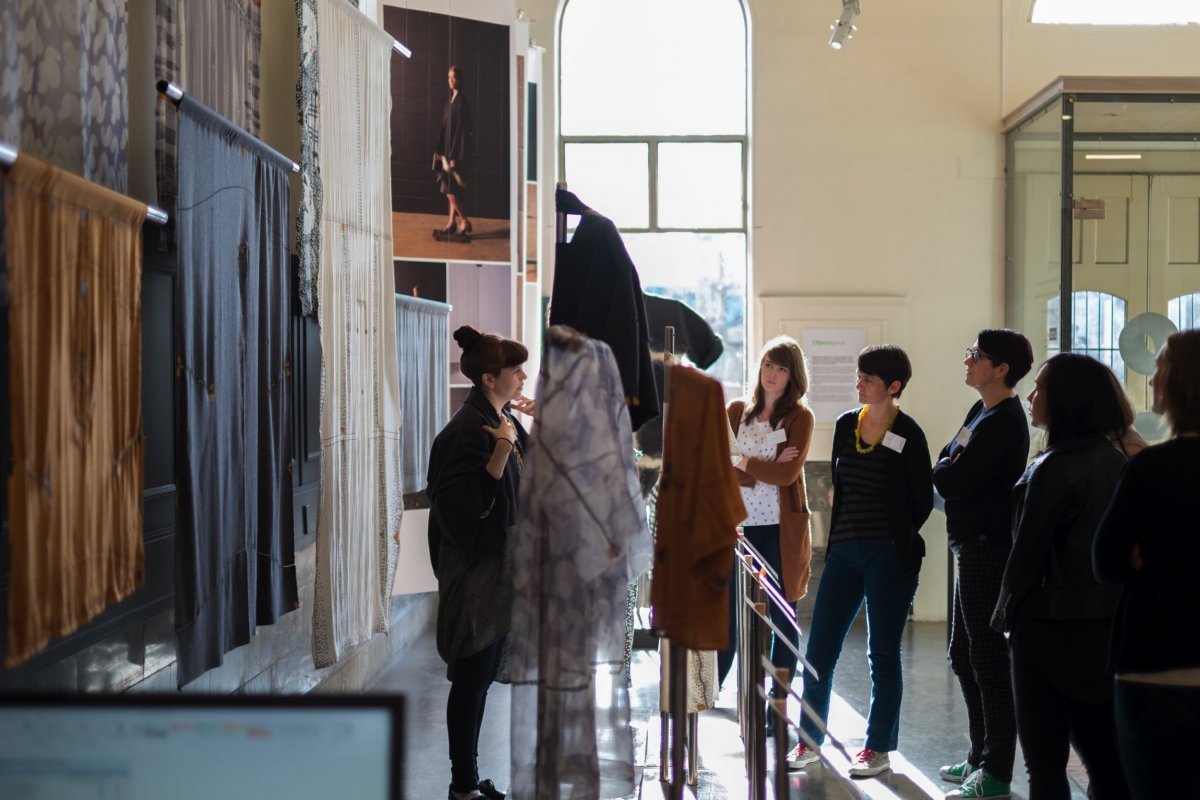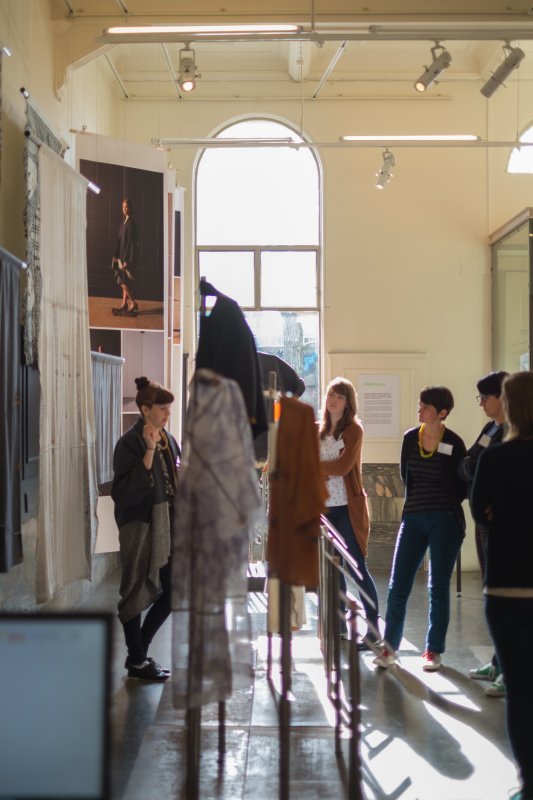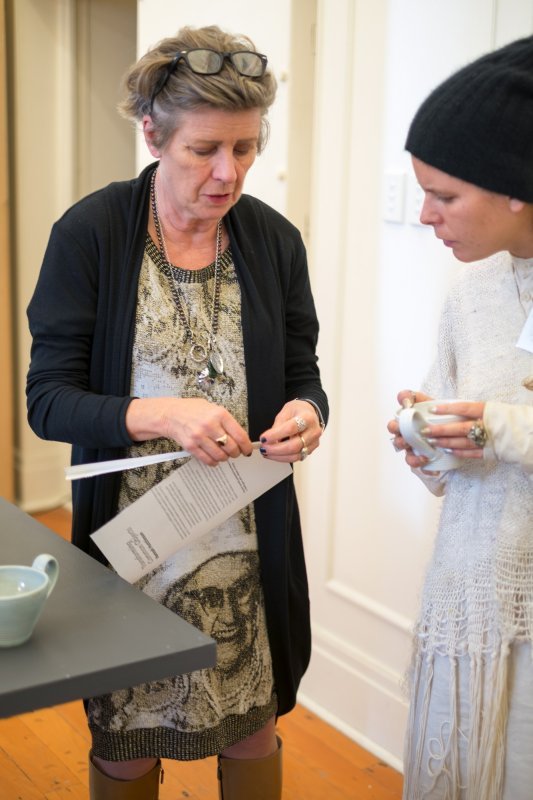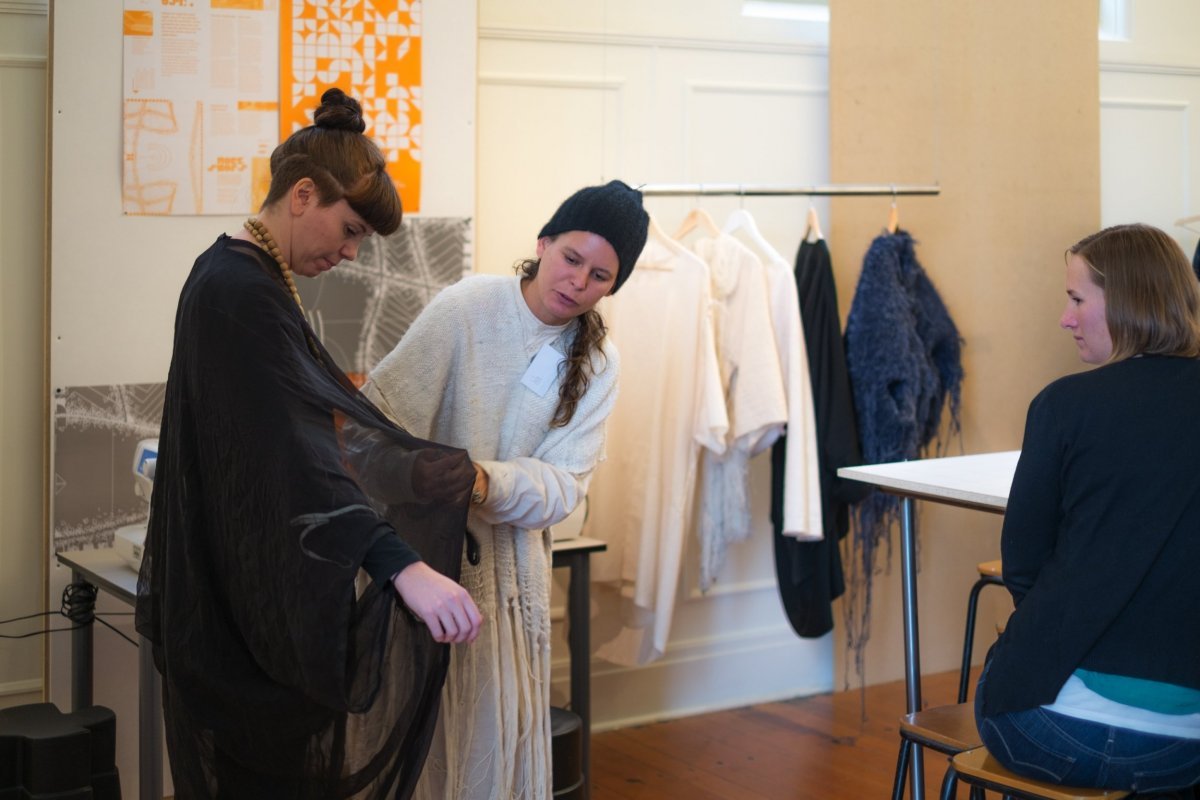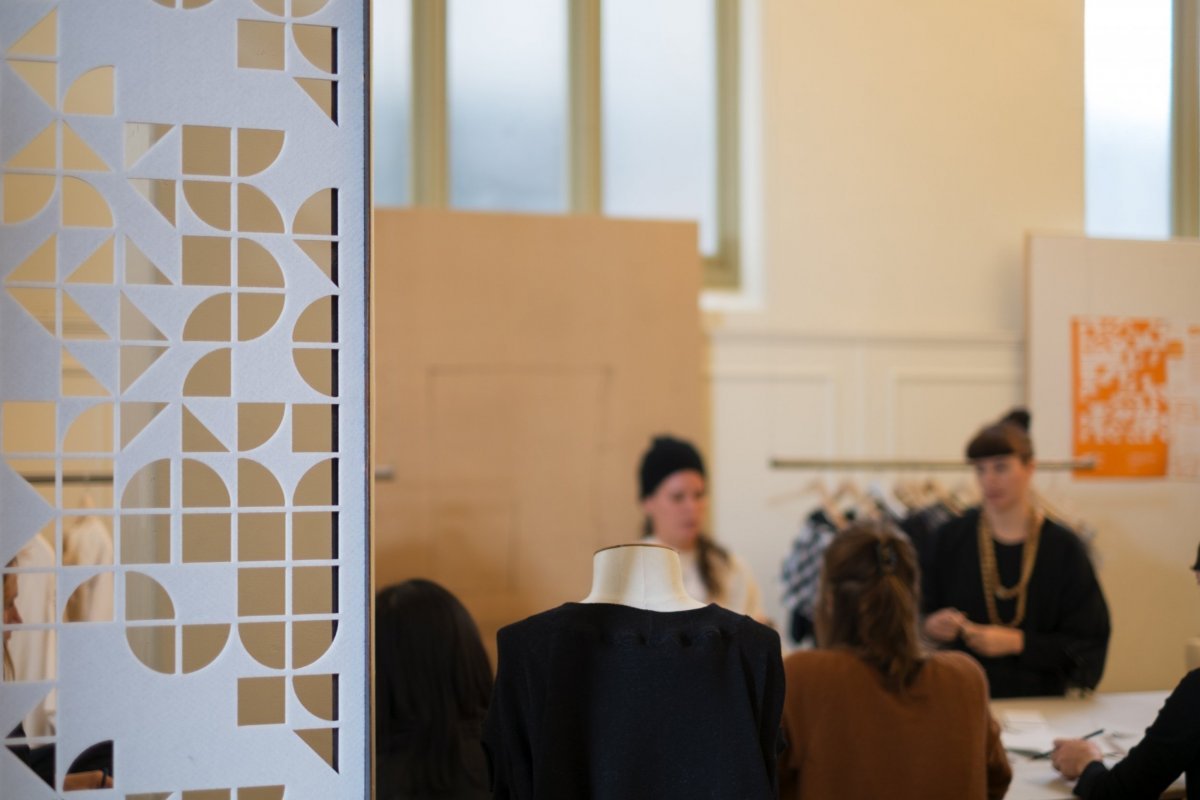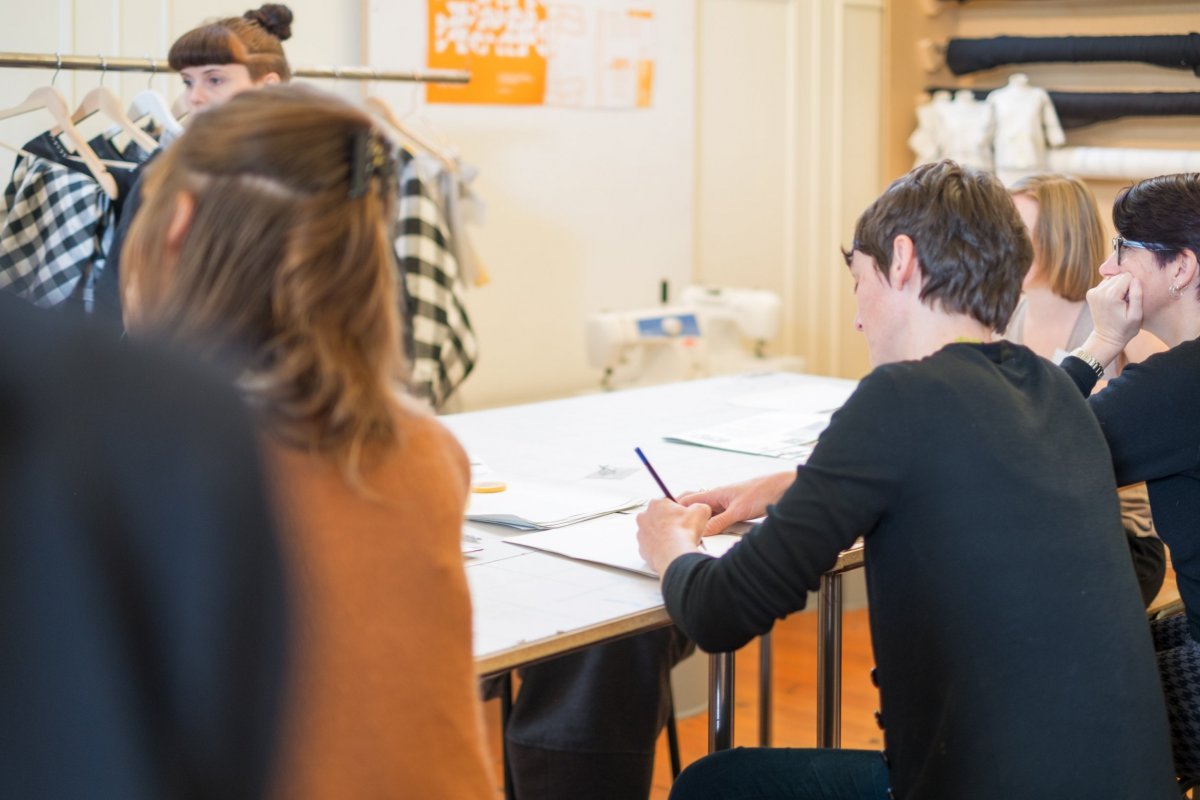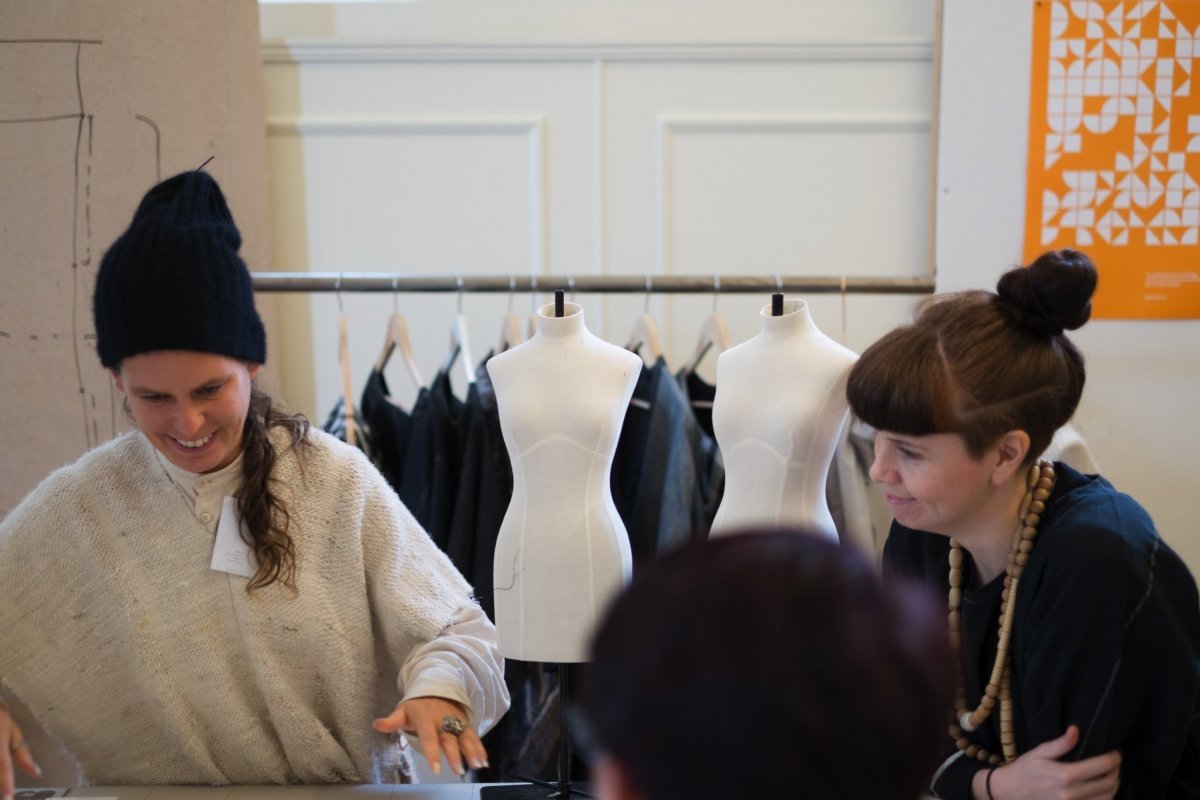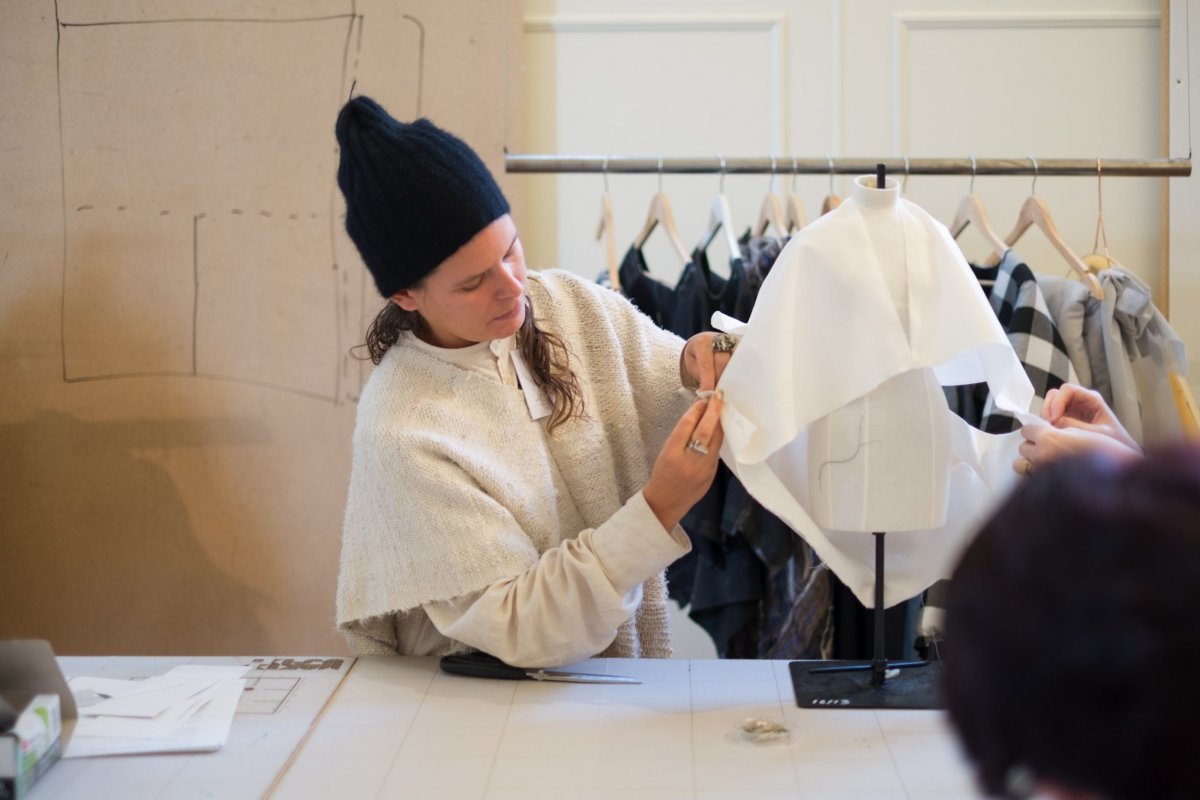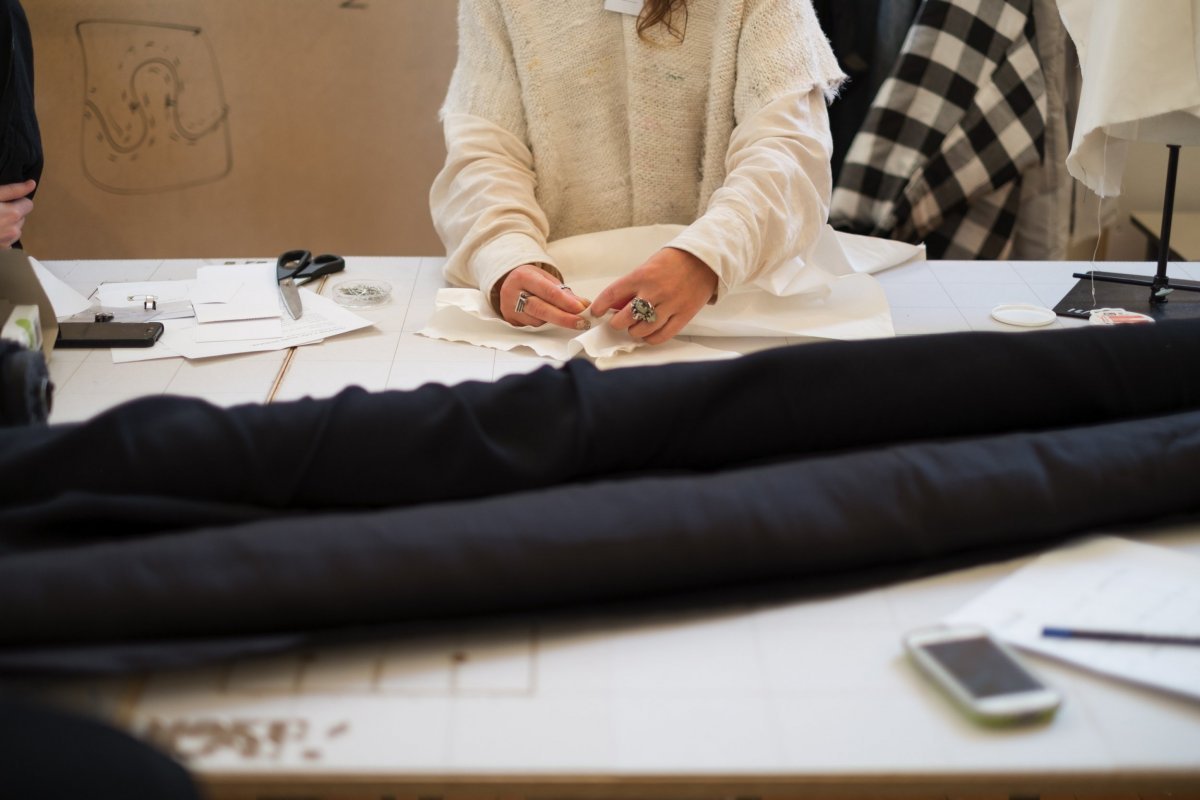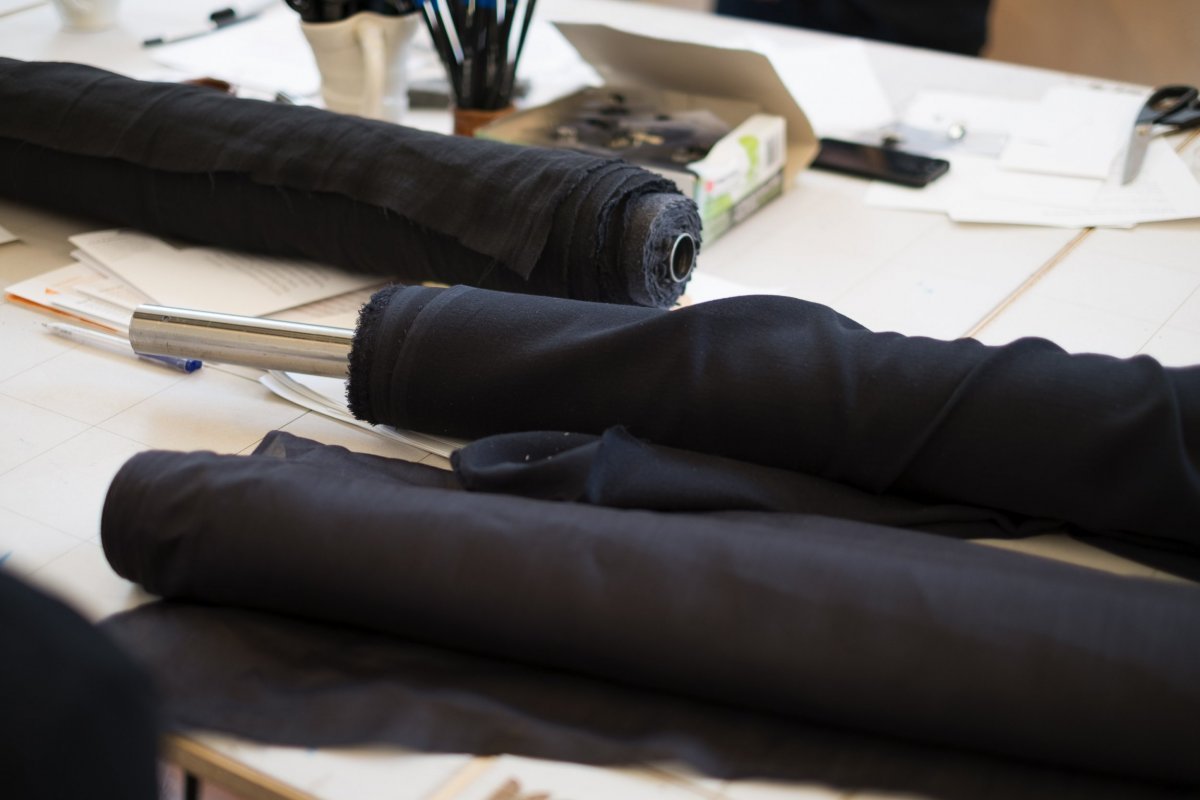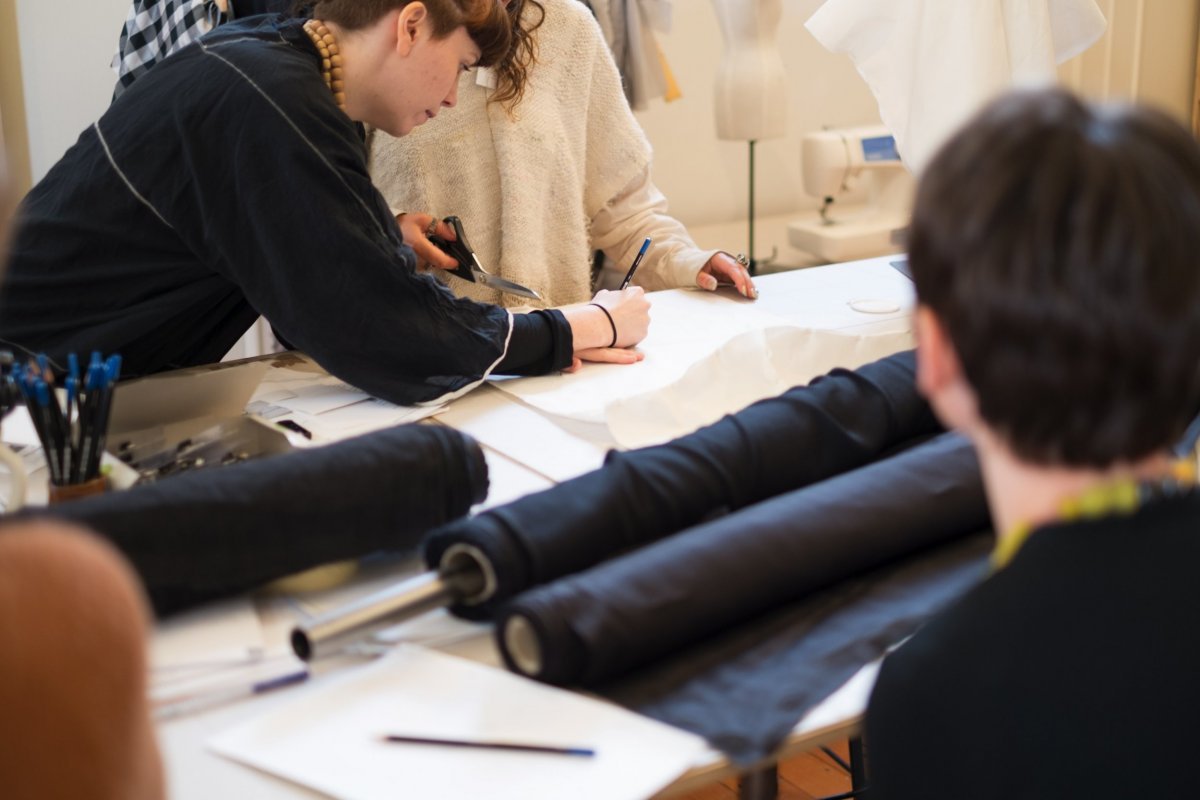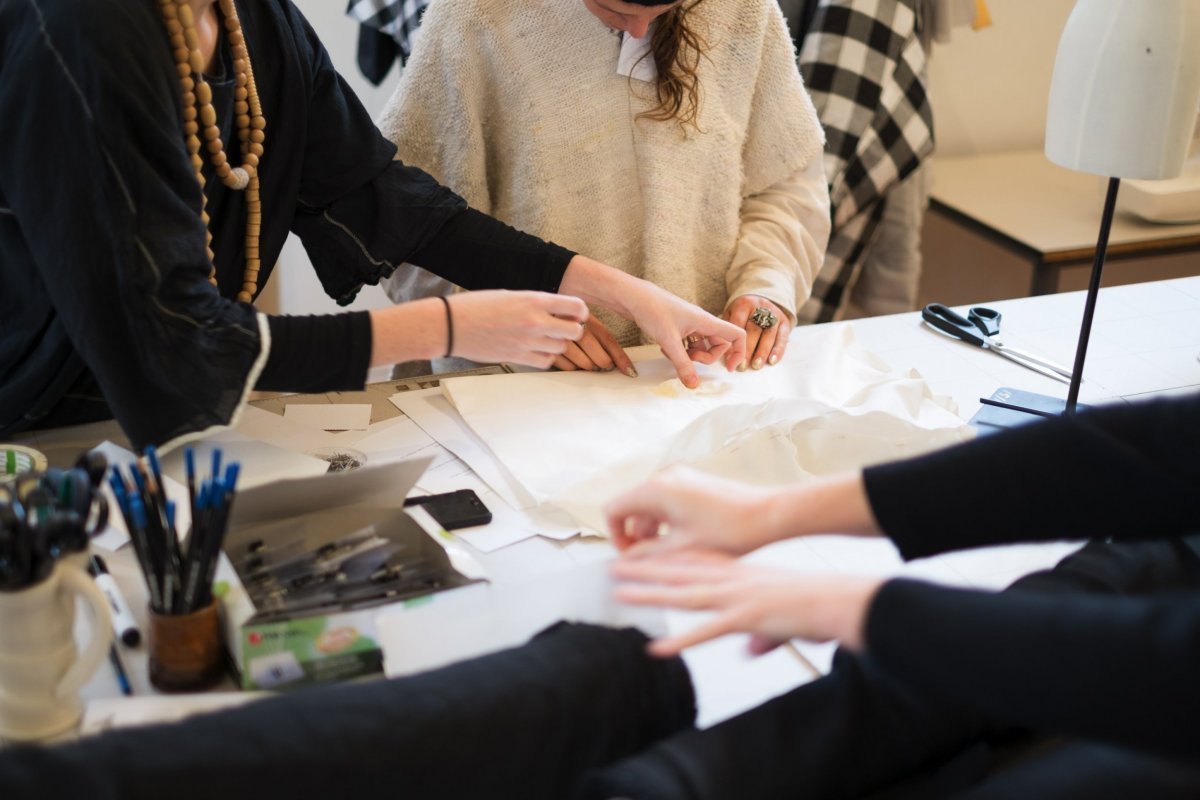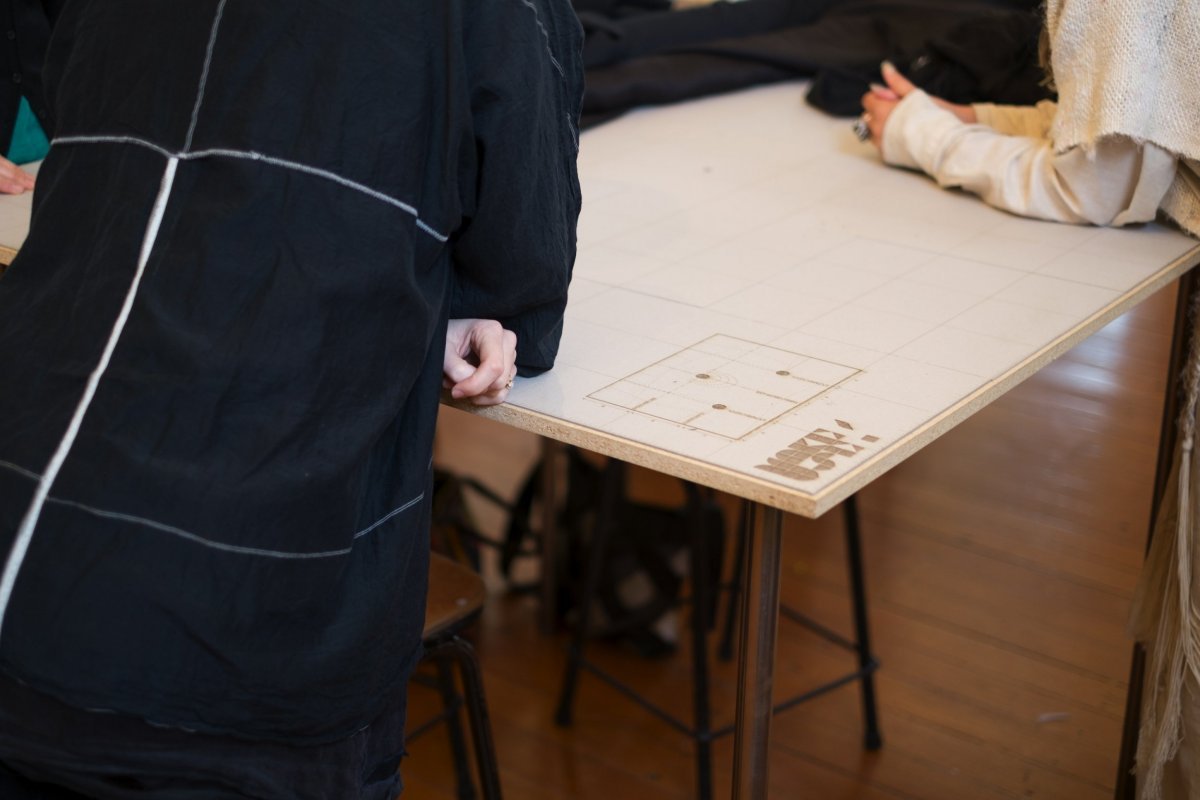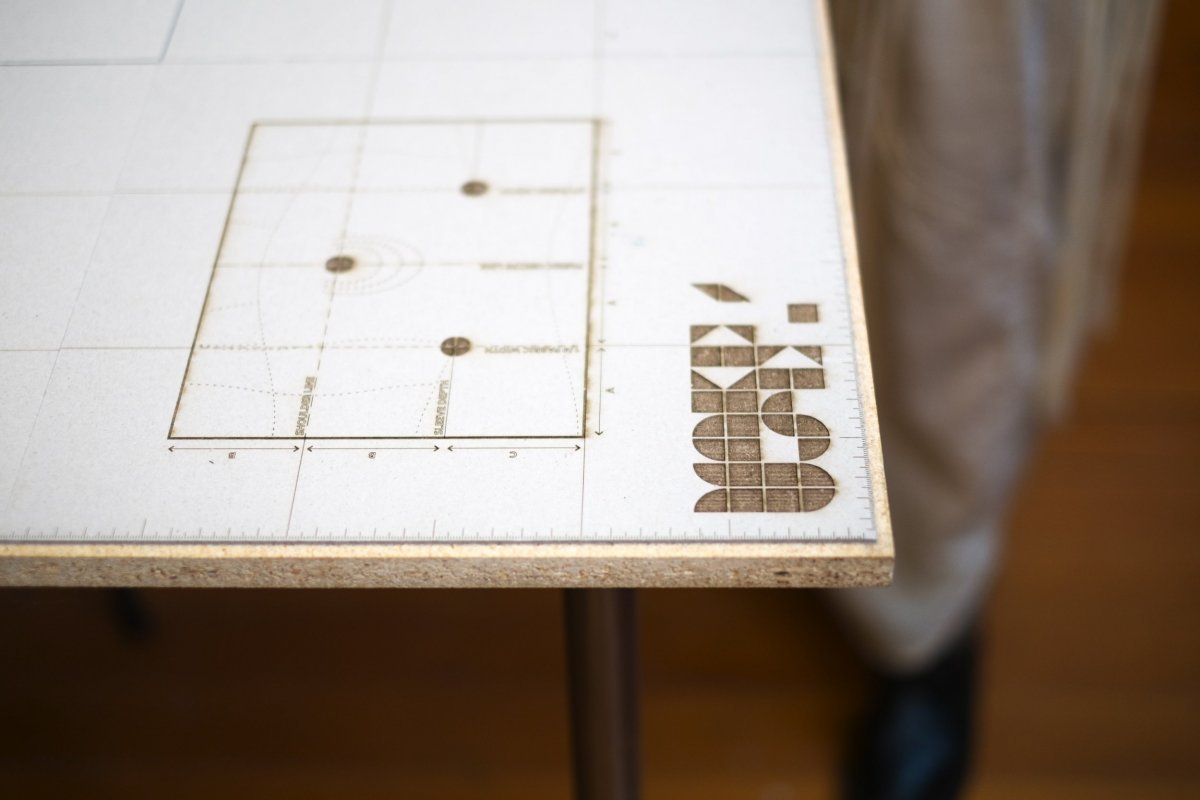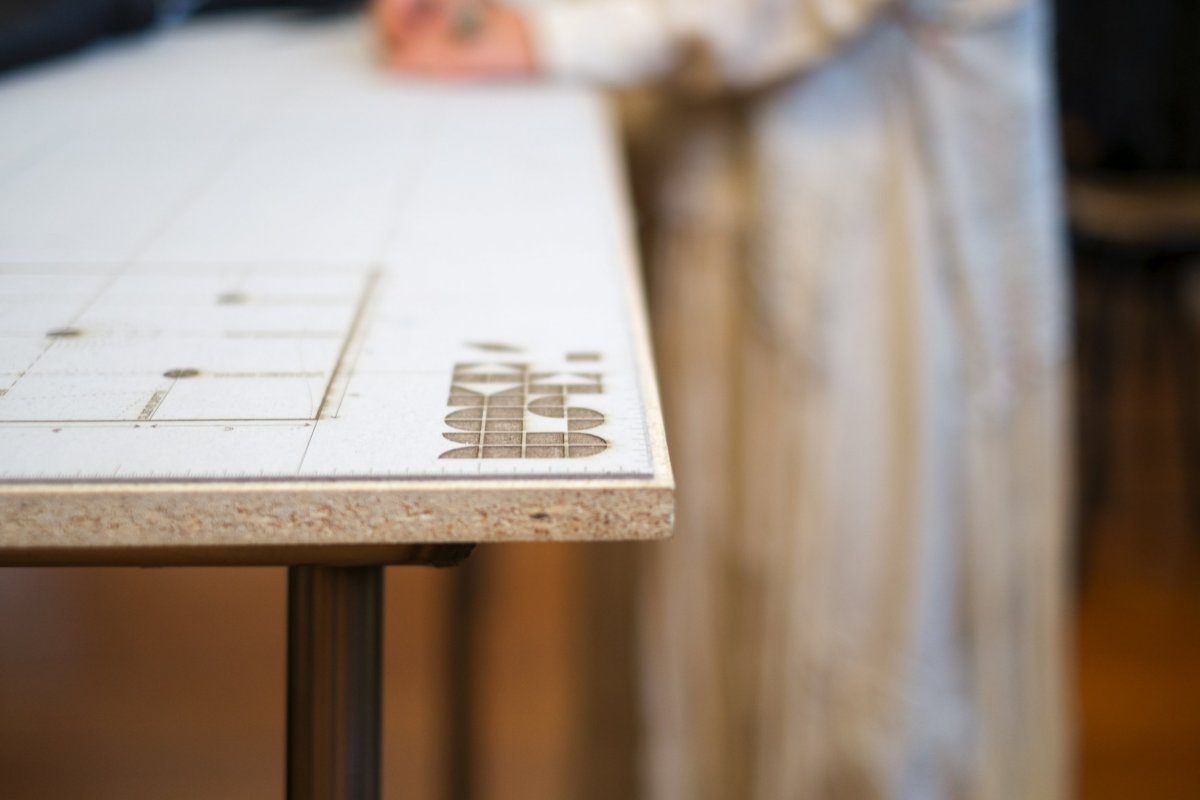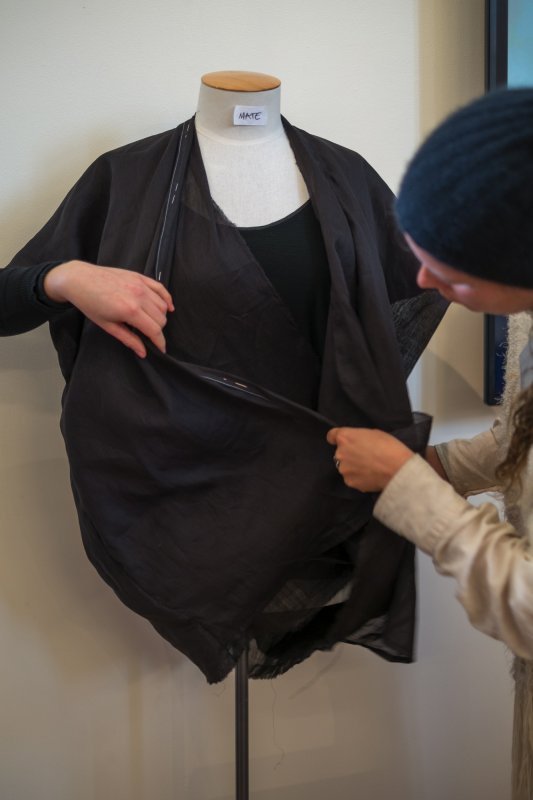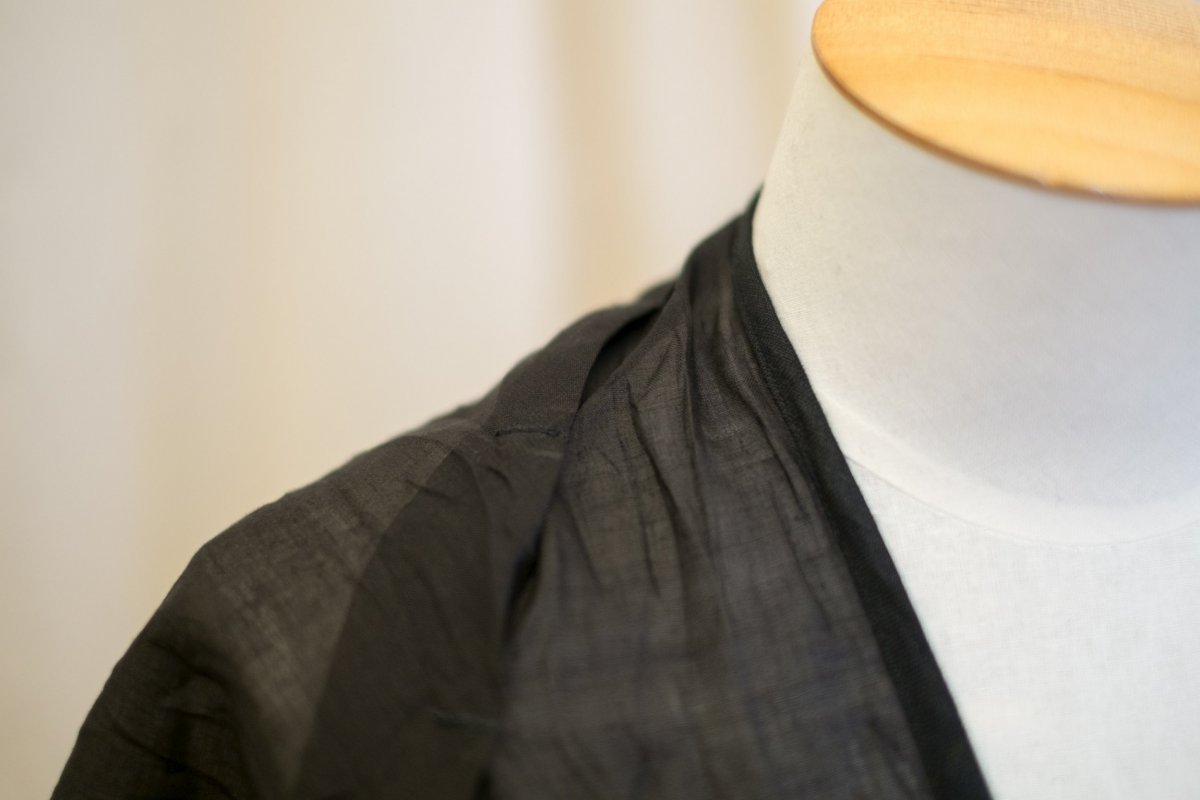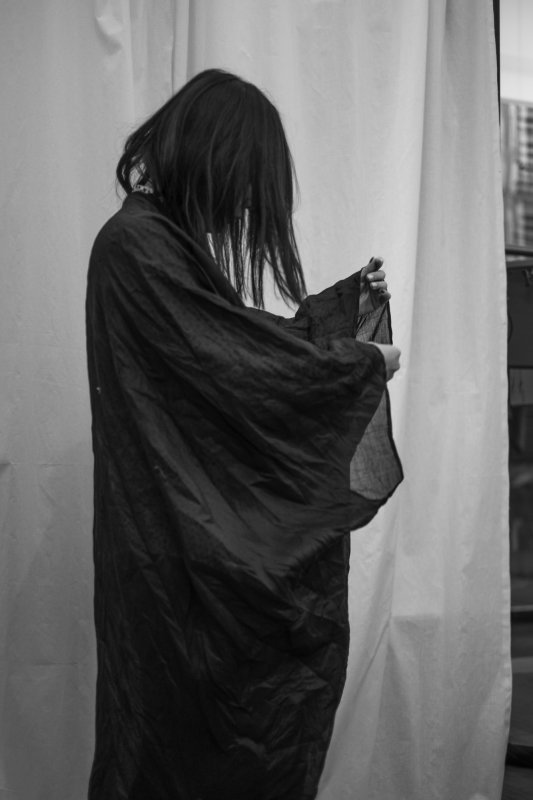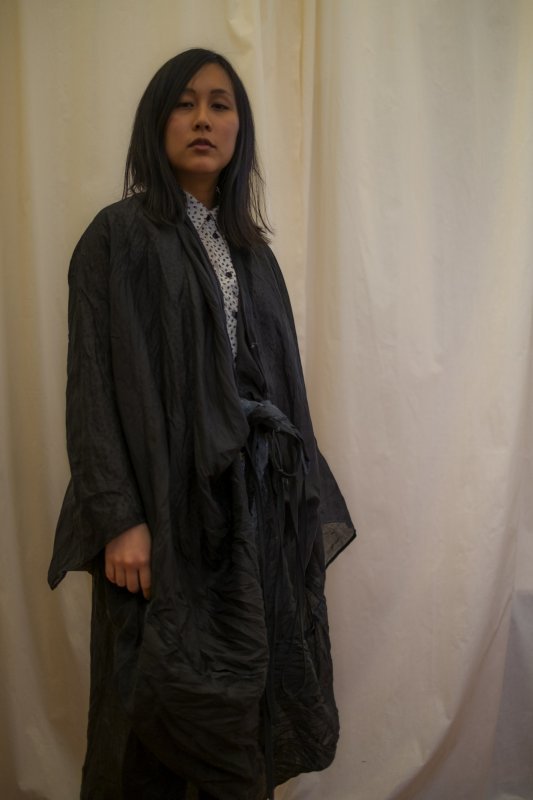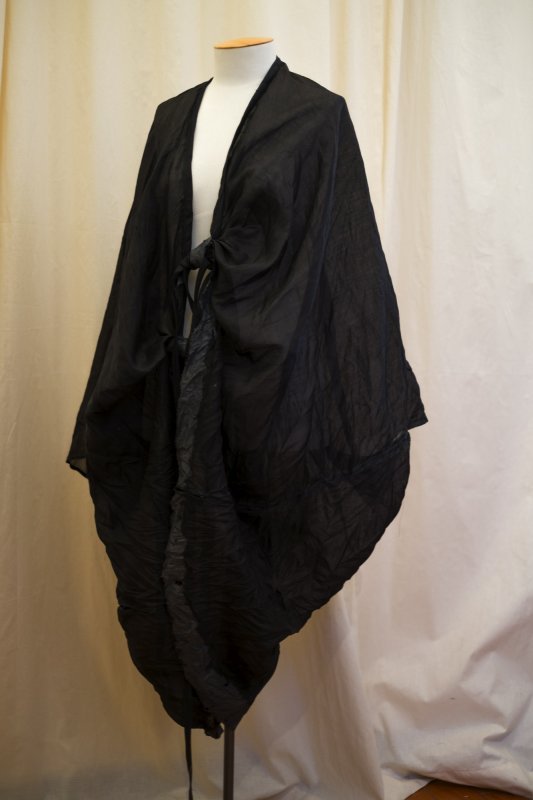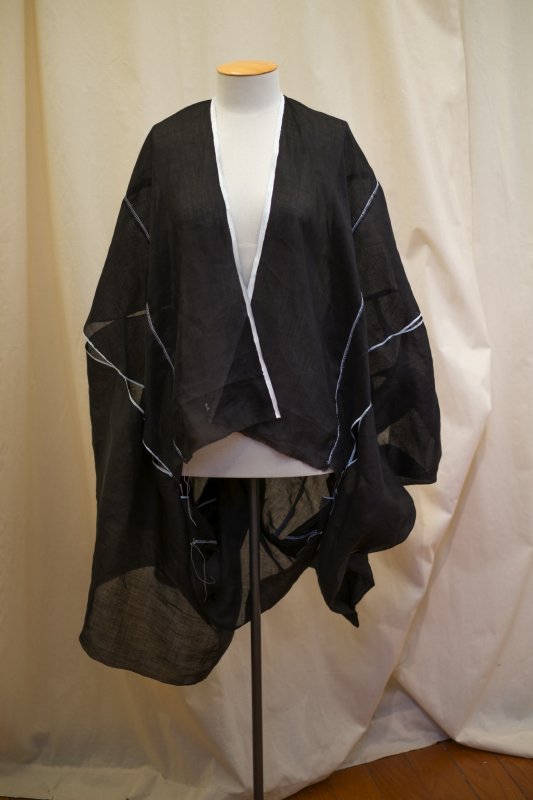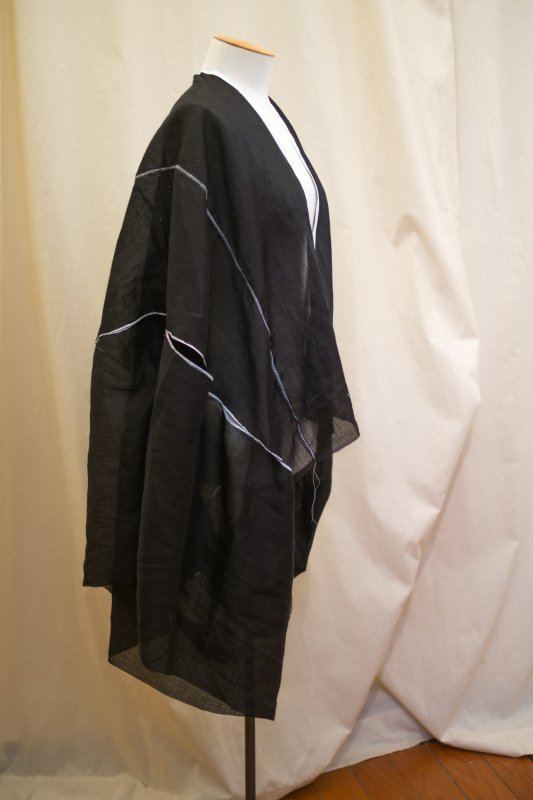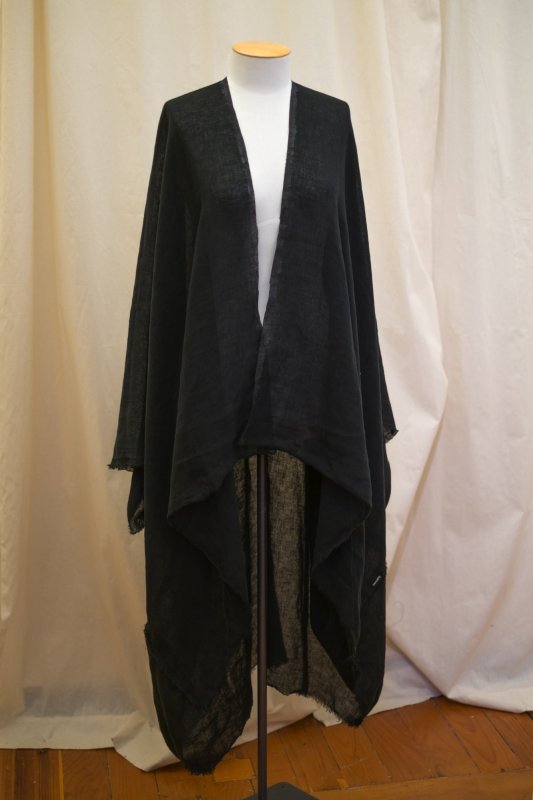Make/Use X Lela Jacobs
New Zealand designer Lela Jacobs joined Make/Use for the final workshop at Objectspace. Participants were introduced to the pattern for Lela's zero waste Smoking Jacket, and were given the opportunity to experiment with the possibilities of evolving it through Make/Use modification techniques.
The smoking jacket
The most basic smoking jacket form comprises a single cut that creates the front opening of the jacket, and ends at the back of the neck. The sides are then sewn up, leaving an arm opening. The innovation comes in the positioning of the neck opening via the length of the cut, which alters the way the garment hangs on the body. Further modifications can be made by the wearer through variously wrapping or tying the ends of the jacket hem to create different forms.
Modification #1: Neckline
With the positioning of the neck opening being so central to the smoking jacket design, the application of a Make/Use neckline was an obvious potential adaptation. Most suited for this purpose was the collar neckline, which extends the original cut and adds a square upside-down U-shaped cut to its termination point, thereby creating a dropped back and neck band. Participants explored variations on this, including a cross-over back created using an elongated version of the neckline.
Modification #2: Rotation
The Make/Use rotation method uses a curved cut and 180-degree rotation of any garment ‘tube’ (e.g. body, sleeve), to create a ‘bent tube’ that alters the drape and reshapes the hemline or sleeve. Either a vertical (sleeve) or horizontal (body) rotation can be applied to the smoking jacket, as it can essentially be considered a tube in either direction. One participant explored the vertical rotation, which created a flattering taper from the sleeve hem down to the base of the garment.
Modification #3: (Pre)finishing
Participants also employed Make/Use techniques for pre-finishing the cut edges of the cloth with paint, prior to cutting. This was a quick and accessible finishing option, and also provided opportunities for customising the detail of the garment. Participants explored different colour options, and one even experimented with manipulating her painted linen voile to achieve a crinkled-paper effect, which acted as both a hem finishing technique and added visual interest.
Modification #4: Joining
As an alternative to machine sewing, some of the maker/users explored hand stitching using the insertion stitch, which is used in Make/Use to ‘mend’ or ‘reset’ a previously cut area. Some participants utilised the organic, hand-crafted quality of this stitch to produce beautiful design details. In one instance, this detail resulted from a modification during the design process – or the ‘repair’ of a cut that was later deemed too long – both altering the garment and making it unique.
The workshop marked the beginning of a collaboration between Lela Jacobs and Make/Use, and evidenced the potential application of Make/Use elements to existing patterns, or pattern development. Make/Use would like to thank Lela, and also the workshop participants, who applied themselves so fearlessly to this exploration at the cutting edge of avant-garde garment construction.



